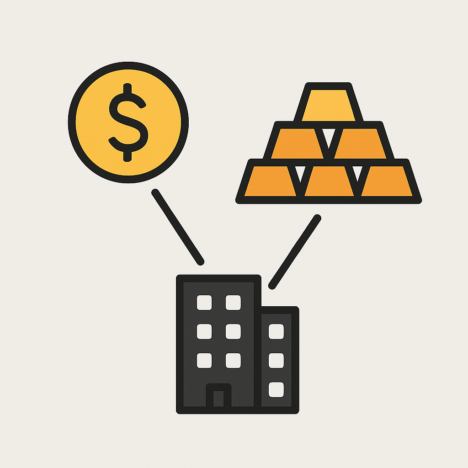An easy-to-follow guide to the biggest players in crypto—and how they can shake the market with a single splash
🌊 Introduction: A Whale in the Blockchain?
In the world of cryptocurrency, there’s a term that causes equal parts awe and anxiety:
Whale.
Not the ocean kind. The wallet kind.
A crypto whale is a person or entity that holds a massive amount of cryptocurrency. Think millions—or even billions—of dollars worth of Bitcoin, Ethereum, or other tokens. These aren’t casual HODLers or day traders. They are market movers.
And when they decide to make a splash? The ripple effect can be felt across the entire ecosystem.
Let’s break down exactly who crypto whales are, how they move markets, and why you should always pay attention when a giant stirs in the blockchain deep.
🐋 What Exactly Is a Crypto Whale?
A crypto whale is defined by one key trait:
They own enough of a cryptocurrency to influence its market price—intentionally or not.
There’s no strict numerical threshold, but here are some common guidelines:
- Bitcoin Whales: Wallets holding 1,000 BTC or more
- Ethereum Whales: Often defined as 10,000 ETH or more
- Altcoin Whales: Varies by project, but usually top 1% holders of any token
These whales might be:
- Early adopters (bought BTC when it was $1)
- Crypto exchanges (holding assets on behalf of users)
- Investment funds (like Grayscale or MicroStrategy)
- Project insiders or founders
- Private individuals with serious buying power
🧠 Why Whales Matter: Supply, Power, and Panic
Whales matter because cryptocurrency markets are still relatively small compared to traditional financial systems. That means:
- A single wallet selling tens of millions worth of coins can crash a price.
- A massive buy can trigger a price surge and retail FOMO.
- When whales move funds, the market often holds its breath.
It’s not that whales are always trying to manipulate the market—but their size means that even normal behavior can look like manipulation.
📉 Whale Watching: When Big Wallets Make Big Moves
Let’s say a whale holds 20,000 BTC (~$1 billion at $50,000/BTC). If they suddenly move that BTC to an exchange wallet, here’s what happens:
- Analysts notice the transaction on-chain (blockchains are public, after all).
- Crypto Twitter starts buzzing: “Whale alert! $1B BTC moved to Coinbase!”
- Traders panic. “They’re going to sell!”
- People start selling in anticipation.
- The price dips—sometimes for no reason at all.
This chain reaction is called whale-induced market fear. And it’s surprisingly common.
💣 Pump-and-Dump Behavior: When Whales Go Rogue
Not all whales are passive. Some are outright predators.
Here’s how a pump-and-dump works:
- The whale accumulates a low-cap coin quietly.
- They shill the project on social media or through paid influencers.
- Retail investors jump in. Price goes parabolic.
- The whale dumps their holdings near the peak.
- Price crashes. Retail gets wrecked.
These schemes are especially common in microcap tokens with low liquidity. It’s legal gray territory, but morally? Very murky.
Warning signs of a pump-and-dump:
- Sudden, unexplained price surge
- Over-the-top hype with no fundamentals
- “It’s going to the moon!” posts flooding Twitter
- Lack of transparency from the project team
🕵️ How to Spot a Whale in the Wild
Thanks to blockchain transparency, whale activity is trackable. You can’t see names, but you can see wallets—and some are tagged as known whale addresses.
Tools like:
- Whale Alert (Twitter)
- Etherscan / Blockchair
- Lookonchain
- Glassnode / Nansen (premium analytics)
Let you follow large transfers, exchange deposits, token swaps, and more.
You’ll often see headlines like:
“Whale moves $300M worth of ETH to Binance”
These don’t always result in action—but when they do, the market reacts fast.
🏦 Are Exchanges Whales?
Yes—and they’re some of the biggest whales of all.
Exchanges like Binance, Coinbase, and Kraken hold massive reserves of coins for user deposits. These reserves show up on-chain as single addresses holding hundreds of thousands of coins.
However, these aren’t always a market threat. Exchanges rarely make trades with user funds. But when cold wallets move to hot wallets, it can signal large withdrawals or selling pressure.
That’s when traders pay attention.
🧠 Are Whales Always Bad?
Not necessarily. In fact, whales often play a stabilizing role in the market:
- They buy during fear, adding liquidity and stopping crashes.
- They help projects by providing early capital.
- Their wallets serve as a signal for institutional involvement.
But when whales collude, coordinate, or manipulate smaller markets, they can cause chaos.
So no—they’re not evil sea monsters. But they’re not harmless fish either.
⚖️ Whale Behavior vs Market Psychology
Whales don’t even have to do anything to influence markets.
Sometimes the mere suggestion of whale movement triggers:
- Panic selling
- FOMO buying
- Frenzied speculation
This creates feedback loops of volatility, especially in small-cap or illiquid coins.
That’s why whale watching is both art and science. It’s not just about tracking movements. It’s about understanding market psychology and anticipating what comes next.
🚫 How to Avoid Whale Traps
Want to avoid getting swallowed by a whale wake?
Here’s how:
✅ 1. Don’t Trade Microcaps Based on Hype
Low liquidity = easy to manipulate.
✅ 2. Watch Wallets, Not Tweets
Wallets tell the truth. Tweets tell the narrative.
✅ 3. Set Stop-Losses
Whale dumps happen fast. Protect yourself with smart exits.
✅ 4. Don’t Chase Green Candles
If a token just pumped 200% in 24 hours, you’re probably late. Don’t be exit liquidity.
✅ 5. Diversify
Whales can’t rug your entire portfolio if you’re diversified across solid projects.
🐳 Famous Whale Tales (You Should Know)
📖 Satoshi Nakamoto
The mysterious Bitcoin creator is the ultimate whale, believed to control over 1 million BTC—none of which has ever moved. The day it does? Market chaos.
📖 MicroStrategy (Michael Saylor)
The corporate whale. Holds over 200,000 BTC. Often viewed as a barometer for institutional sentiment.
📖 The “2011 Dormant Wallet”
Every year, old wallets wake up, sending huge amounts of BTC after a decade of silence. Often spook the market, even if they’re just reorganizing.
🔮 Final Thoughts: Swim Smart in Whale Waters
In crypto, whales are both guardians and gamblers.
They can stabilize a shaky market—or tank it with a single keystroke. They’re powerful not because they’re evil, but because the market is still small enough that their size matters.
Understanding whales isn’t about fearing them. It’s about:
- Learning their patterns
- Recognizing their influence
- Protecting your position
So the next time you see a massive BTC transfer hit your feed, don’t panic.
Just remember: even in blockchain waters, it’s not the splash that gets you.
It’s what comes after the ripple.




